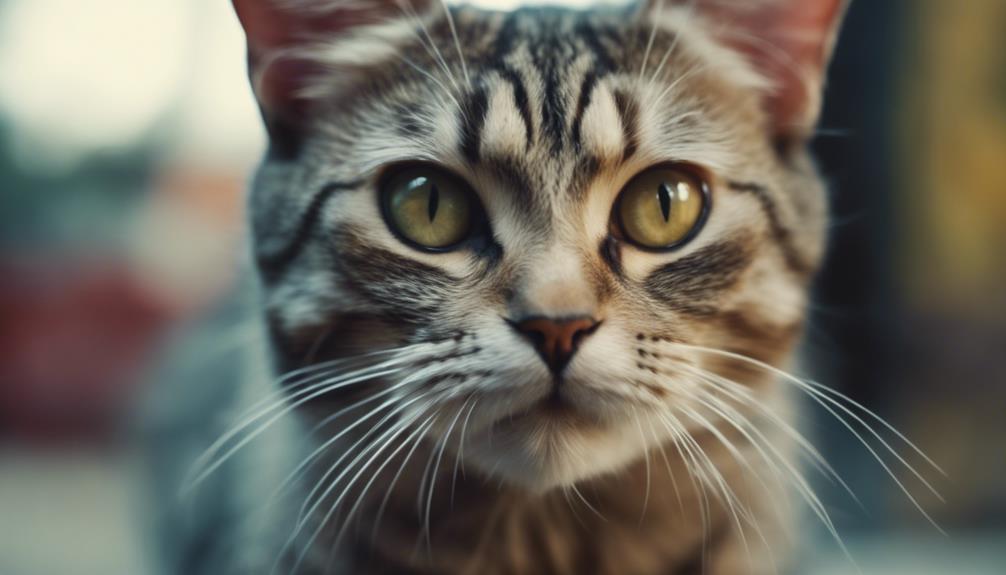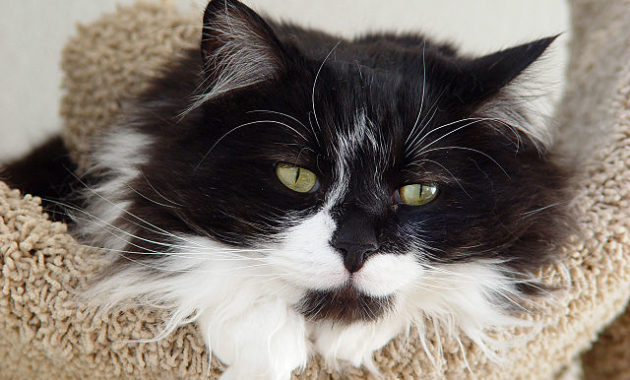Understanding your cat's language can provide profound insights into their world. From subtle gestures to vocal cues, cats have a sophisticated way of expressing their feelings and needs. By deciphering these signals, pet owners can establish a deeper connection with their feline companions.
Learning to decode cat language is not only beneficial for enhancing the bond with your cat but also for ensuring their well-being and happiness. So, if you've ever wondered what your cat is trying to tell you, stay tuned to unravel the mysteries of feline communication.
Key Takeaways
- Slow blinks and back rolls show trust and comfort.
- Purring and kneading indicate love and relaxation.
- Licking or nibbling displays affection and acceptance.
- Tail and ear movements reveal emotions and intentions.
Interpreting Slow Blinks
When observing your cat's behavior, understanding the significance of slow blinks can provide valuable insights into your feline companion's emotions and strengthen your bond with them.
Slow blinks from your cat typically indicate a sense of happiness, relaxation, and contentment. This non-verbal communication signal showcases a level of trust and calmness between you and your cat, fostering a deeper connection and mutual understanding.
By reciprocating these slow blinks back to your cat, you can further enhance this bond and create a positive feedback loop of comfort and reassurance.
Embracing and recognizing the meaning behind these slow blinks can lead to a more harmonious and fulfilling relationship with your beloved feline friend.
Understanding Back Rolls
After gaining insights into interpreting slow blinks as a form of cat communication, the focus now shifts to understanding the significance of back rolls in feline behavior and emotional expression.
Back rolls, where a cat rolls onto its back showing its belly, signify feelings of ease and comfort. This behavior demonstrates a sense of vulnerability and safety, indicating that the cat is relaxed and trusts its environment.
Back rolls also reflect a close bond with the cat, as it shows that the cat feels secure and content in the presence of its human companion. By recognizing and appreciating back rolls, cat owners can further strengthen their relationship with their feline friends and create a harmonious living environment.
Decoding Purring and Kneading

Exploring the multifaceted behaviors of purring and kneading in cats unveils profound insights into their emotional well-being and communication methods. These actions serve as essential indicators of a cat's state of mind and feelings.
Here are some key points to consider:
- Purring is a primary way of showing love and contentment.
- Kneading is a response to stress and a self-soothing behavior.
- Both purring and kneading reflect a positive emotional state and happiness.
- Purring can also indicate a cat's need for attention or comfort.
- Kneading is often associated with feelings of security and relaxation.
Analyzing Licking or Nibbling
Understanding a cat's behavior of licking or nibbling provides valuable insights into their social acceptance and emotional bonds with their human companions. Cats may lick or nibble their human's skin or clothing as a sign of affection and closeness. It demonstrates a sense of trust and comfort in the relationship, highlighting the cat's acceptance and belonging in the shared space.
This behavior can also be a grooming gesture, showing that the cat sees their human as part of their social group and worthy of care. Observing when and how a cat engages in licking or nibbling can help strengthen the bond between the cat and their human, fostering a deeper connection based on mutual trust and affection.
Recognizing Tail Signals

Tail signals in cats provide valuable insights into their emotional state and communication cues. Understanding these subtle movements can help decipher your feline friend's feelings more accurately.
Here are some key tail signals to look out for:
- Tail Up and Vibrating
- Indicates excitement and anticipation
- Reflects joy and engagement
- Shows readiness and eagerness
- Tail Between Legs
- Signifies fear or submission
- Indicates discomfort or anxiety
- Shows a need for reassurance or space
- Puffed-up Tail
- Indicates fear or aggression
- Reflects feeling threatened or defensive
- Shows a need for caution and observation
- Curved Tail Tip
- Indicates friendliness and approachability
- Reflects a relaxed and content state
- Shows a willingness to interact
Deciphering Ear Movements
Feline ear movements provide valuable insights into a cat's emotional state and communication cues, aiding in understanding their underlying feelings and intentions. Cats use their ears to express a range of emotions, from happiness and relaxation to fear and aggression. By observing the position and movement of a cat's ears, pet owners can decipher their furry friend's mood and respond accordingly. Here is a table summarizing some common ear movements and their meanings:
| Ear Movement | Meaning |
|---|---|
| Ears Forward | Alertness and curiosity |
| Ears Flat | Fear or aggression |
| Ears Slightly Backward | Relaxed or content |
| Ears Twitching | Irritation or uncertainty |
Unraveling Vocalizations

Cats utilize a diverse range of vocalizations to express their needs, emotions, and intentions, offering valuable insights into their inner world. When unraveling the meanings behind their sounds, it's essential to pay attention to the following cues:
- Meowing
- Used to communicate with humans rather than other cats
- Can express a variety of needs like hunger, attention, or discomfort
- The tone and pitch can convey different emotions such as urgency or contentment
- Purring
- Often a sign of contentment or relaxation
- Can also indicate pain or distress in some situations
- Acts as a self-soothing mechanism for cats
- Hissing
- Signifies fear, aggression, or discomfort
- Serves as a warning signal to stay away
- Indicates a need for space or boundaries
Reading Body Postures
Interpreting a cat's body language provides valuable insights into their current emotional state and intentions. Cats use various postures to communicate their feelings, whether they are relaxed, agitated, or playful. Understanding these cues can help strengthen the bond between you and your feline companion. Below is a table summarizing common cat body postures and their meanings:
| Body Posture | Meaning |
|---|---|
| Arched Back | Fear or aggression |
| Belly Up | Trust or submission |
| Flattened Ears | Aggression or fear |
| Slow Blinking | Affection and relaxation |
Grasping Grooming Behaviors

Grasping the grooming behaviors of your feline companion is essential for maintaining their health and well-being. Proper grooming not only keeps your cat clean but also serves as a bonding experience between you and your pet. Understanding these behaviors can help you address any underlying issues or provide necessary care.
Here are some key grooming behaviors to look out for:
- Regular Self-Grooming
- Keeps the coat clean and free of dirt
- Stimulates blood circulation and distributes natural oils
- Helps in regulating body temperature
- Excessive Licking
- Could indicate stress, anxiety, or skin problems
- Requires attention and possible vet consultation
- Hairball Regurgitation
- Normal part of grooming but excessive hairballs may indicate health issues
- Regular brushing can help reduce hairballs
Conclusion
In conclusion, understanding cat language is crucial for building a strong bond with your feline companion.
By deciphering their various communication signals, such as slow blinks, back rolls, purring, and tail movements, pet owners can gain valuable insights into their emotions and needs.
Remember, when it comes to decoding cat language, it's like unraveling a tangled ball of yarn – with patience and observation, the true meaning behind your cat's behaviors will become clear.




